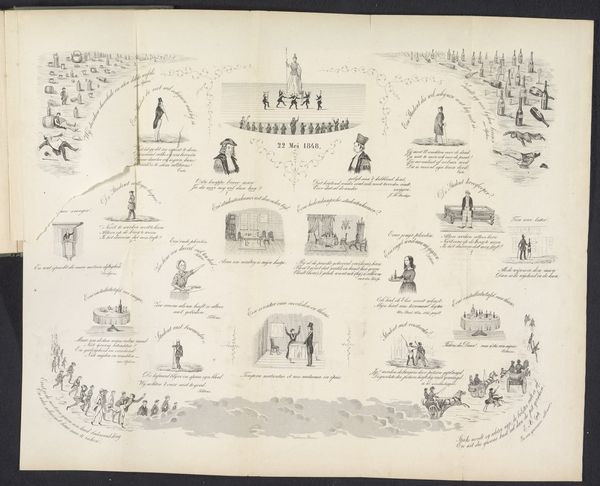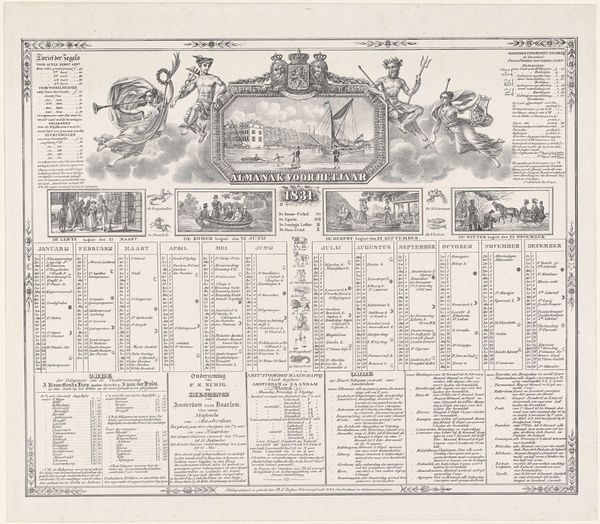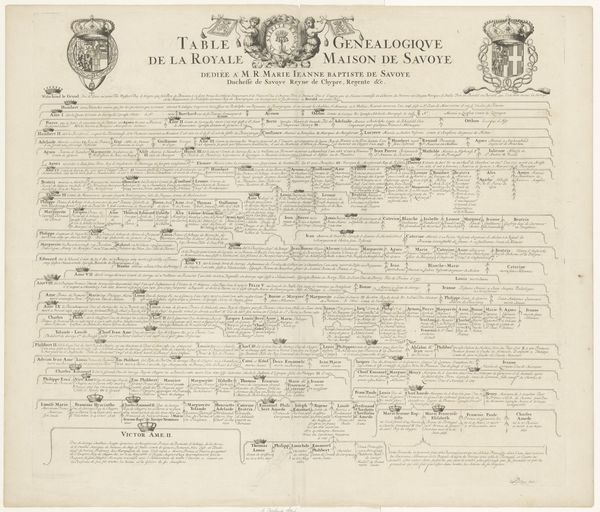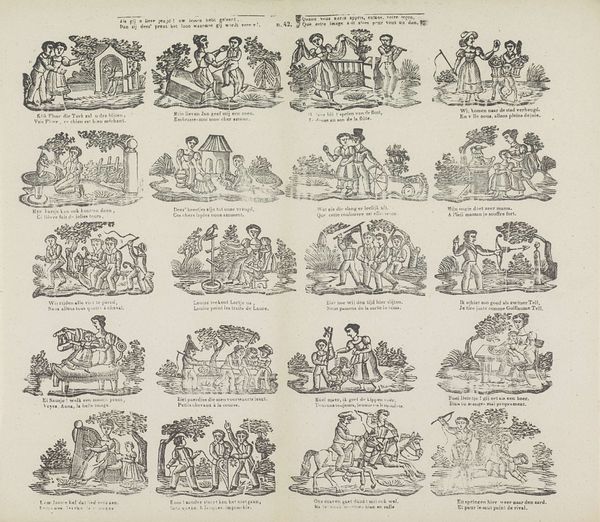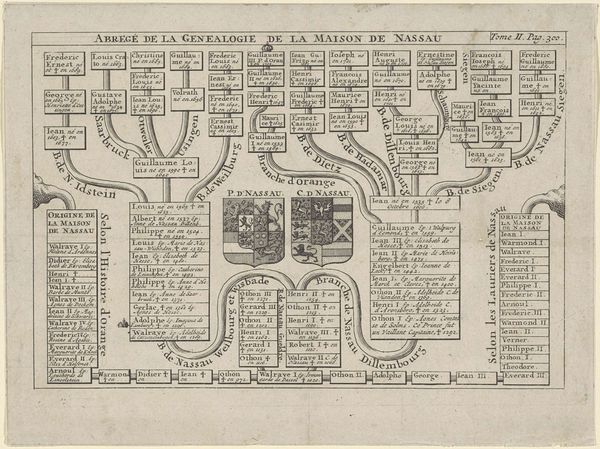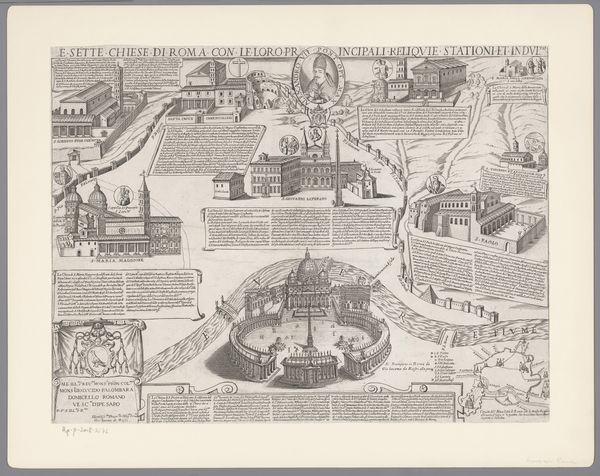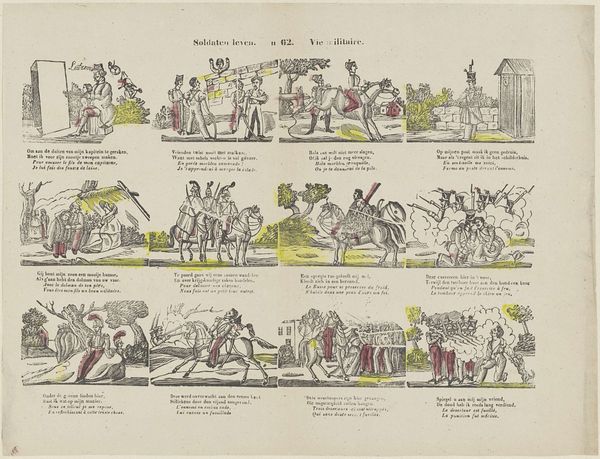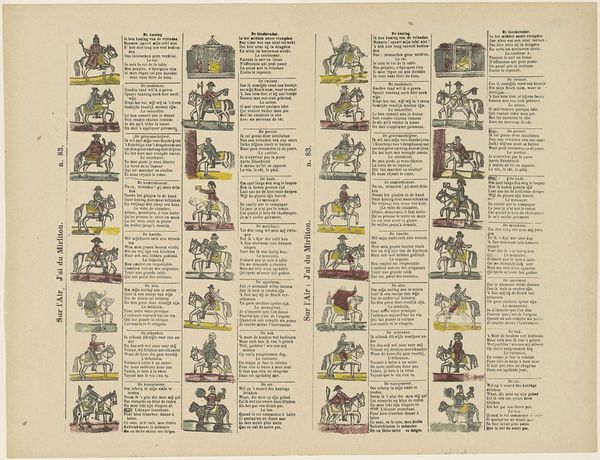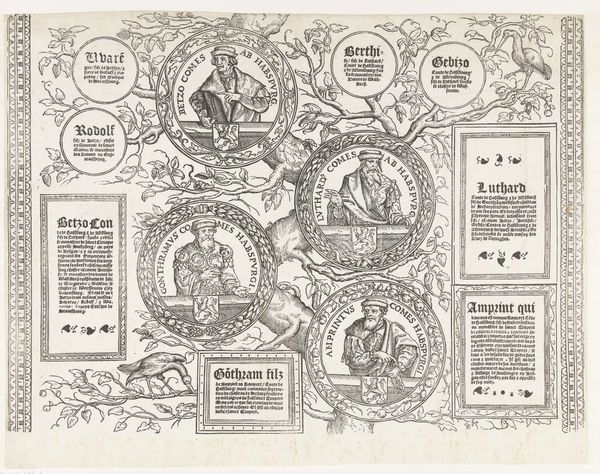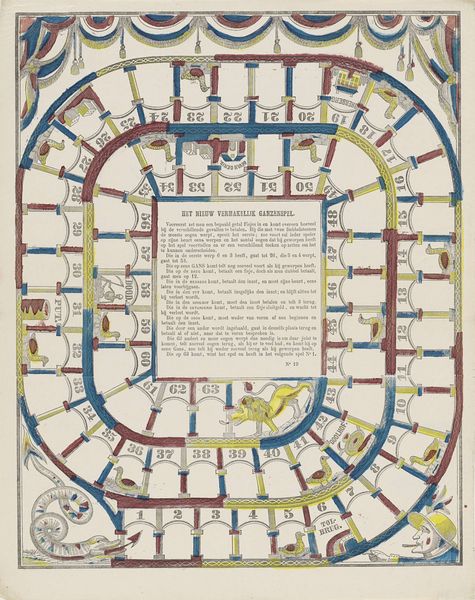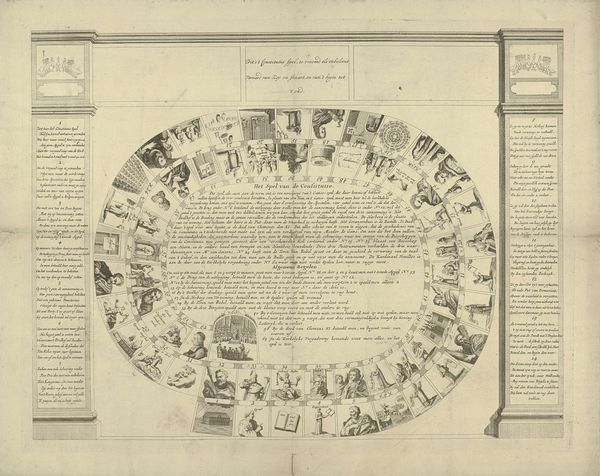
Tijdkaart der Geschiedenis van het Vaderland (onderste helft) 1850 - 1855
0:00
0:00
theodorbruggemann
Rijksmuseum
drawing, graphic-art, print, engraving
#
drawing
#
graphic-art
#
comic strip sketch
#
quirky sketch
#
narrative-art
# print
#
personal sketchbook
#
sketchwork
#
thumbnail sketching
#
line
#
pen work
#
sketchbook drawing
#
history-painting
#
storyboard and sketchbook work
#
sketchbook art
#
engraving
#
initial sketch
Dimensions: height 616 mm, width 820 mm
Copyright: Rijks Museum: Open Domain
Editor: Here we have a lithograph from between 1850 and 1855, titled "Tijdkaart der Geschiedenis van het Vaderland (onderste helft)", or "Time Chart of the History of the Fatherland (lower half)". It's currently held at the Rijksmuseum. It reminds me a bit of a quirky family tree, but with tiny historical scenes. It seems to celebrate Dutch history, but in a rather… unusual way. What exactly *is* going on in this artwork? Curator: Ah, yes! It’s less a traditional family tree and more of a timeline masquerading as one, which makes it both wonderfully eccentric and rather Dutch, don't you think? Look at how Brueggemann blends meticulously rendered scenes with genealogical data. I imagine him poring over history books, then gleefully condensing entire reigns into charming vignettes. It’s like history served with a wink. Editor: I do see the 'timeline' element now! So, each of these little drawings represents a specific historical event or period? It's quite a unique way to present history! Was this meant to be educational or… more for entertainment? Curator: I think it's both, simultaneously! Consider it an early form of infographic—meant to inform but doing so with an undeniably playful spirit. Back then, visual representations of history were becoming increasingly popular, and Brueggemann's take, brimming with wit and intricate detail, would’ve surely sparked conversations. See how the figures are rendered. Editor: Yes, they almost appear like characters from a play! The expressions, the poses…it’s not just about facts, there’s storytelling at play, as well! It is as though he invites you to almost enter into each historical stage. Curator: Precisely! It transcends mere chronicling; it transforms history into a vivid narrative. It whispers secrets to those who linger long enough to listen and suggests history should never be without playfulness. Editor: I agree entirely! What initially seemed like a chaotic jumble of images now reveals itself as a cleverly constructed, engaging narrative. It makes history less like a textbook and more like an adventure! Curator: And isn't that the best kind of history to engage with, ultimately? I certainly believe that approaching history with some personal connection helps us remember. This piece certainly is a unique mnemonic device!
Comments
No comments
Be the first to comment and join the conversation on the ultimate creative platform.
